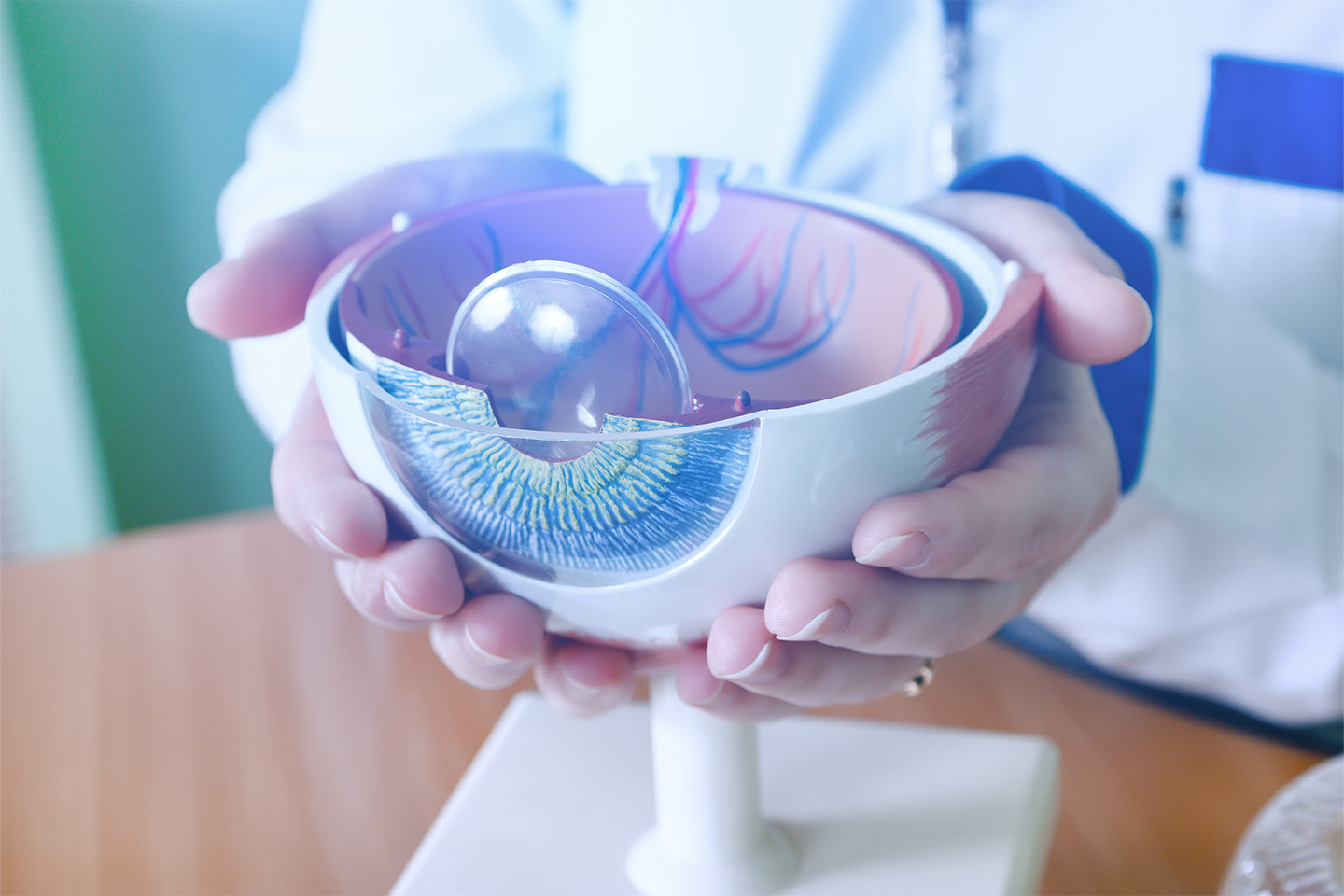Understanding Key Differences in Wet vs. Dry Macular Degeneration

Age-related macular degeneration (AMD) is a common eye condition affecting millions worldwide and is a leading cause of vision loss in individuals 50 and older. There are two primary forms of macular degeneration: wet and dry. Understanding the key differences between these two types is crucial for diagnosing, treating, and managing the condition.
What Is AMD?
AMD is an eye condition that affects the macula, the layer of light-sensitive tissue at the back of the retina. The macula begins to deteriorate, resulting in blurry central vision and loss of fine detail perception. AMD does not cause complete vision loss; peripheral vision can remain unaffected. Wet and dry AMD both affect the macula, but their progression, symptoms, and treatment options differ significantly.
AMD Progression
- Dry AMD, or atrophic AMD, is when the macula thins with age. Approximately 80% of all individuals with AMD have this form. It progresses slowly, typically over several years, in three stages: early, intermediate, and late. In the early and intermediate stages, small protein deposits called drusen accumulate under the macula and cause it to deteriorate slowly. Dry AMD, regardless of stage, can become the wet form of AMD.
- Wet AMD, also called advanced neovascular AMD, is less common than dry AMD but is more severe with rapid onset. New, abnormal blood vessels grow beneath the retina and leak fluid and blood, resulting in scarring and damage to the macula. This growth of blood vessels is called choroidal neovascularization (CNV). Wet AMD is always considered late stage.
Symptoms of AMD
- Often, no symptoms present in the early or intermediate stages of dry AMD. Some individuals may experience mild symptoms in intermediate stages, like slight blurriness or difficulty seeing in low-light settings.
- Late AMD (both dry and wet types) most commonly causes straight lines to appear wavy and a blurry spot to form in the central vision. That spot often becomes more prominent and leads to blank spots in your sight.
Treatment for AMD
Treatment for AMD depends on the type, stage, and severity.
- Dry AMD: Currently, there is no cure for drusen or treatment for early dry AMD. Your eye doctor or ophthalmologist may recommend regular monitoring and lifestyle changes, including dietary changes, exercise, or quitting smoking, to benefit your eye health. Vitamin and mineral supplements and eye-healthy foods, like fish, yellow fruits, and green leafy vegetables, may help slow the progression of dry AMD in its intermediate stage. According to the American Academy of Ophthalmology, the FDA approved two medications in 2023 to treat dry AMD that have already caused geographic atrophy: pegcetacoplan and avacincaptad pegol. These injectable drugs may help slow atrophy progression and delay vision loss.
- Wet AMD: Different treatment options are available to help slow or stop vision loss from wet AMD.
- Anti-vascular endothelial growth factor (anti-VEGF) treatment can inhibit the abnormal blood vessel growth that causes wet AMD and prevent further vision loss. Approximately 1 in 3 patients experience improved vision with anti-VEGF therapies; 9 out of 10 see their vision stabilized.
- Laser photocoagulation is an outpatient eye surgery and may be used to help seal leaking blood vessels causing damage to the macula.
- Photodynamic therapy, a less common treatment and combination of anti-VEGF injections and photocoagulation laser treatments, may also be recommended for individuals with wet AMD.
Who Is at Risk for Developing AMD?
While natural aging is the most common cause of AMD, the risk of developing the condition is higher in individuals who:
- Are 50 or older
- Eat a diet high in saturated fat
- Are overweight
- Smoke
- Have hypertension (high blood pressure)
- Have a family history of AMD
Protect Your Vision with Kleiman Evangelista Eye Centers of Texas
Early detection of wet and dry AMD through regular dilated eye exams is crucial for timely intervention and management. Retinal imaging, such as optical coherence tomography (OCT), is another diagnostic tool that can reveal swelling or fluid leakage and allow your provider to measure the retina’s thickness.
Whether your condition is in early, intermediate, or advanced stages, or if you’re just beginning to experience vision problems, the vision experts at Kleiman Evangelista Eye Centers of Texas are committed to helping you manage your AMD and maintain your quality of life. Request an appointment today to speak with a retina specialist.
[DISPLAY_ULTIMATE_SOCIAL_ICONS]








